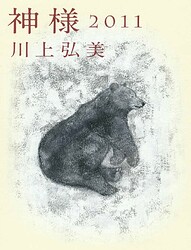The name can be used in any way for any story or plot. Just that this is meant for learning especially it is used for beginner level where people might get confused.
Yes, i previously learnt that japanese have different way of classify living things and non living thing for different grammar usage. So it gets confusing.
For English, tree are consider as living thing but for japanese they consider it as not living thing and need to use ある.
For example がいる
Because the things being described in these examples are considered to be alive (or operated by something that is alive), いる is the verb that will be used. ある is used for non-living things.
I believe ある is more so much used for non-living things AND inanimate things. So it’s less that they don’t consider trees living things. But more for ある is for things that don’t move on their own and that includes non-living things and also inanimate things such as trees.
I could be wrong and I’ve seen the description that you are referring to. But I just think it’s another bad way of describing it. I think of it more like
いる is for things that can think and act on their own
ある is for everything else, regardless of if it is alive or not.
That being said 歩く does not apply to this because this is not a grammatical device this is a word in itself that happens to sound like the grammatical device.
Thanks for info. I always remember it as tree are exception case for living things. it is confusing as it is while learning.
Imagine learning this grammar point and having a sentence " 木がいる " with translation “tree is (exist)”. A person named 木 is (exist).
Book recommendation:
First page of said book, check the first sentence.
Quoting from Read Japanese Literature Podcast on a previous book by the same author (bold face is mine)
Kawakami’s 1993 “God Bless You” opens in medias res—in the middle of the action with no explanation—“The bear invited me to go for a walk to the river, about 20 minutes away.” This is a real, full-grown, male bear. And he has moved into apartment 305, three doors down the hall from the narrator. This is magical realism—the kind we talked about a few episodes ago. Magic that coexists along with the every-day. No explanation whatsoever. The bear has also made the old-fashioned gesture of presenting the narrator with “moving-in noodles” and packets of postcards.
Being pedantic here, but the bold part is a partial summary of what the story says given that the information provided is actually sentences apart from each other. For example , the first sentence says, “I was invited to go out for a walk by a bear.” Second sentence, “We’re going to the riverbank.” Third sentence, “The riverbank is a place around 20 minutes away by foot.” Later on the narrator mentions that the bear is big because he’s an adult bear, etc, etc.
However, your point still remains. In this story, the bear is like a person, that speaks and has a rational mind, which could’ve been one way to interpret the sentence in the BunPro example.
Anyway, just clarifying things for anyone who might not be able to read the story and might be wandering what it actually says.
Well technically the lack of an article would imply them being a person, though the lack of capitalization makes it ambiguous as in that case it would just be a typo, though it is also a stereotypical mistake made in English by foreigners that lack determiner based grammars; so, really your point is not as clear as you may hope it would be.


